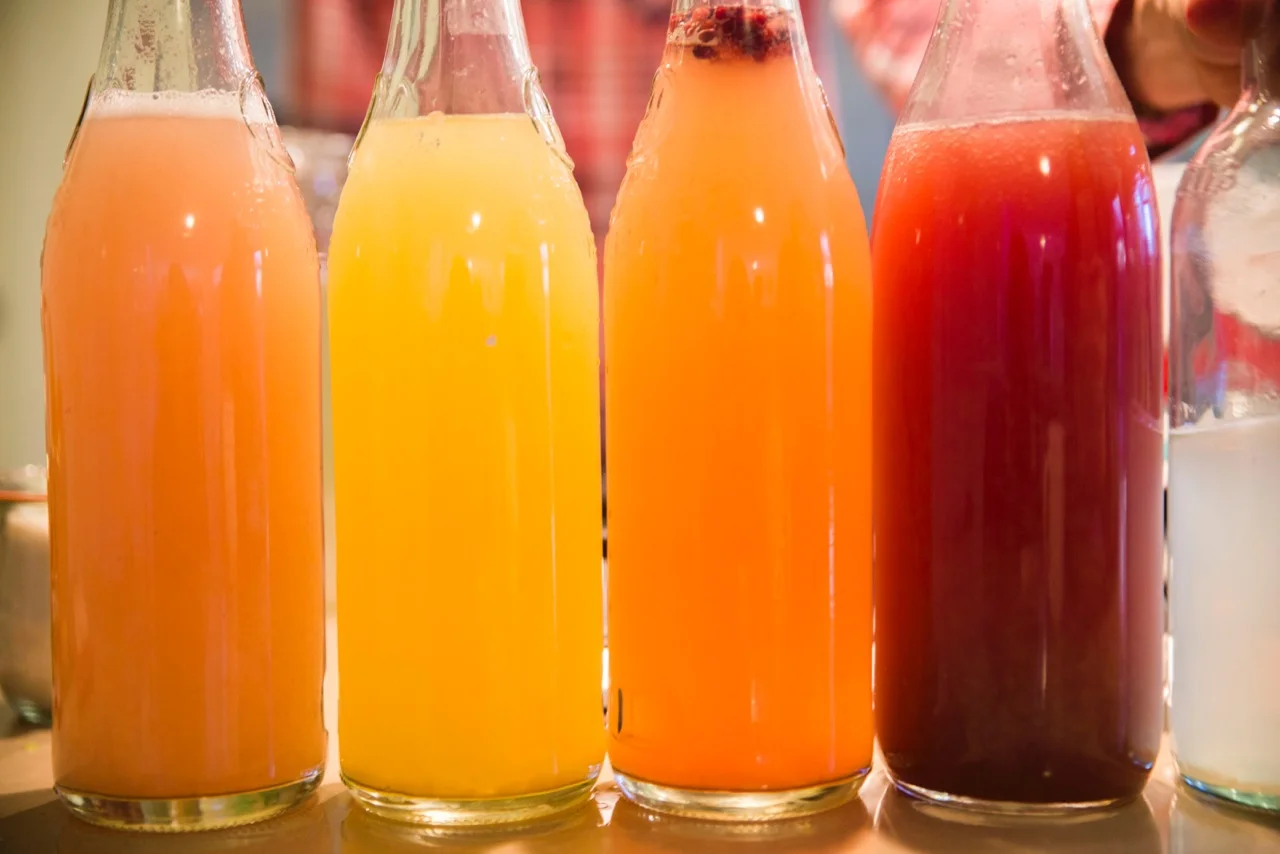Every time you eat or drink, you are either feeding disease or fighting it.
Heather Morgan.
So what is Kombucha?
Kombucha is a fermented, sweetened tea made using a live culture known as a SCOBY. What’s a SCOBY? It’s an acronym for a Symbiotic Colony of Bacteria and Yeast. The culture resembles a rubbery mushroom-like disk that reproduces or develops on the top of each new brew.
The fermentation process consumes the sugars in the tea so a short brew can still have a sweetness to it from the added sugars but a longer brew time increases the vinegar flavours in the batch. Kombucha is mildly effervescent, acidic and may contain small amounts of alcohol that are generally between 0.5% and 3%.
People often comment on the vinegar flavour when they first try Kombucha but this is less noticeable to those who consume it regularly. Last week a friend said she didn’t like kombucha the first time I gave her some but that now she quite likes it and that’s even without knowing what’s so good about it!
As a beverage, Kombucha has grown dramatically in popularity in recent years, to the point where you can now find it in cafes, bulk food stores and supermarkets rather than just health food or organic stores. Some places are now serving it on tap!
Due to its long history, it has been known by many names such as the Immortal Health Elixir, Elixir of Youth, Manchurian tea, Tea Kvass, Mushroom tea, Tibetan fungas and Booch.
But why drink it?
The benefits of Kombucha are experienced when it’s consumed raw, which simply means it’s unpasteurised or unheated, and can include: improved gut health, detoxifying, easing of joint pains and a boost to your energy.
If you wanted to, how do you make Kombucha?
To make Kombucha you need the live culture (the SCOBY), some starter liquid from a previous batch and some sweetened tea. To aid the process you’ll need a breathable cover for the jar, as the fermentation is an aerobic process but you need to keep out fruit flies and other contaminants. Finally, I usually tell people to find something to wrap around the jar to give her, the SCOBY, some privacy - which is a simple way of saying to keep the environment dark while the Kombucha is brewing.
Each batch you make will yield fermented Kombucha and the starter liquid for the next batch. The process will produce a new SCOBY baby from the mother which can be kept or separated in a batch of its own. Your Kombucha SCOBYs will soon be abundant so make sure you have friends to give them to!
Can you flavour Kombucha?
Once fermented, the SCOBY is removed and the brew is bottled. You can increase the carbonation and create flavour diversity by adding an additional sugar source to continue the fermenting process. This is referred to as second fermenting. You can second ferment the brew for 1-4 days on the bench by adding fruit juice, un-sulphured dehydrated fruit, fresh fruit, vegetables and herbs to create wonderful variety and fruity flavours. Remember if using dehydrated fruit that as the fruit rehydrates you’ll need to make sure it can be removed from your bottle. Cut it up beforehand!
How much Kombucha should I drink?
If you’re new to Kombucha then enjoy in moderation. Start small with ¼ to ½ glass a day to regulate the detoxifying impact it may have. Moderation and diversity are key as you learn to read the feedback of your body’s introduction to Kombucha. You will start to enjoy the many benefits of Kombucha once you find your own level of consumption.
Some Warnings if….
You are pregnant or nursing; be-aware of the detoxifying nature of the beverage and don’t consume or consume in small amounts.
You have a compromised immune system; like AIDS patients or cancer patients then it may be too strong for your body to deal with the toxins released during the detox process.
You are avoiding alcohol; as it may have from 0.5 – 3.0% by volume or more if it has not been appropriately refrigerated once bottled. It will continue to ferment if not refrigerated well.
You have a tendency to just sip your Kombucha over an extended period of time; in that the acids may damage your tooth enamel. Rinsing afterwards is then recommended.
And finally….
Try it, enjoy it and if your ready, learn how to make your own!
